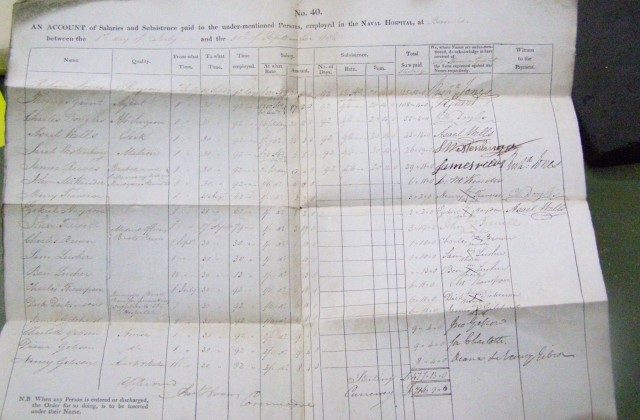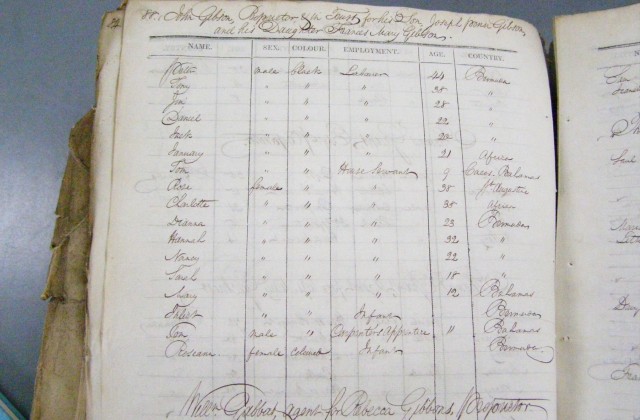Black women have often been overlooked in the dominant narratives of history. This is true for the history of nursing, where Florence Nightingale and her peers are still the best-known figures of the field. Yet Black women have participated in and contributed to nursing for centuries, and my own research into the Royal Navy has shed some light on the nursing work of enslaved Black women in Caribbean hospitals in the late 18th and early 19th centuries.
As the operations of the Royal Navy grew during the 18th century, several clinical naval hospitals were established throughout the Atlantic World. These hospitals included two in England: Haslar Naval Hospital in Portsmouth, and Plymouth (Stonehouse) Naval Hospital in Plymouth. Though these naval hospitals were the largest, employing hundreds of women as nurses and treating thousands of sailors, it was hospitals in the Greater Caribbean that most often dealt with fever patients struck down by the greatest killers of the time: yellow fever and malaria.
Racialised assumptions
The vulnerability of British sailors to these tropical fevers combined with medical officers’ belief in the immunity of Black bodies resulted in Black nurses, including enslaved women, being used in Royal Navy hospitals.
The disease environment of Jamaica, Antigua, Bermuda, St Lucia and Barbados was deadly for the "unseasoned" bodies of British-born sailors.
In the 18th century, prevailing belief among both medical practitioners and the public was that an individual’s constitution was defined by the climate in which they were born. British bodies were therefore seen as suited to the temperate climes of Britain or colonial environments in New England and Canada.
For the body of a sailor to thrive in the Greater Caribbean they would need to undergo a process of sickness and acclimatisation known as seasoning.
Medical officers’ belief in the immunity of Black bodies to tropical diseases resulted in Black nurses being used in Royal Navy hospitals
How naval medical practitioners understood tropical diseases, and especially immunity, influenced their nursing decisions.
Nurses were at the nexus of a medical, gendered, and colonial labour environment founded on racialised understandings. Although the scientific racism of the 19th century was not yet in force, as historians like Rana Hogarth, Suman Seth and Simon P. Newman have shown, Black bodies were perceived to be immune to yellow fever and malaria.
Nursing work
The nursing work these enslaved Black women performed aligned with perceptions of gendered labour throughout the British Atlantic World. As at Haslar and Plymouth hospitals, nursing work in the Greater Caribbean required body work, medical work, and preventative environmental controls. Body work meant ensuring that patients and bedding were clean.
Medical work included providing medicines prescribed by the physician or surgeon, monitoring symptoms and disease progression, and if necessary, alerting the medical officer of changes. Fever nursing, part of the nurses’ medical work, was particularly onerous, involving almost constant bedside care.
Environmental control was an important tenant of 18th-century medicine, as diseases were believed to emanate from foul air and miasmas. Part of the nurse’s duty was to open windows to ventilate, purify the air with fumigation lamps, and keep the ward clean.

Despite the importance of the work these women performed for the Royal Navy – and by extension the British imperial state – it is frustratingly difficult to discern much about individual nurses from the surviving naval records held at the National Archives and the National Maritime Museum.
The pay list from 1816, shown above, lists the names of enslaved women who worked as nurses between October and December that year. This record also shows the name of their enslaver, John Gibson. The navy paid Gibson the wages due to the nurses, which is why his name is listed at all.
Tracing lives
Following an Act of Parliament in 1819, the Office of Registry of Colonial Slaves began to collect information about enslaved people in slavery registers.
By tracking down Gibson in these registers it is possible to learn a few biographical details about the enslaved nurses that worked at the Bermuda Naval Hospital.
Diana, for example, was listed as 23 in the 1821 register making her 18 when she was recorded as working as a nurse in this pay list. The only other information about Diana given in the slavery register was that she was a house servant and born in Bermuda.

The work of these nurses in naval hospitals had many similarities with that of mid-19th century nurses. Yet, the work and lives of Black nurses in naval hospitals has been overlooked. They are obscured from dominant historical narratives of both nursing history, which usually begins with the reforms of Florence Nightingale, and naval medical history, which primarily examines the experiences of sailors, medical officers, and naval operations.
Nightingale and other 19th-century nursing leaders who established nursing as a respectable and educated profession for middle-class white women should not be ignored. However, it is important to consider the continuity between this period (which Lavinia Dock and Adelaide Nutting described in their 1907 A History of Nursing as “the darkest known period in the history of nursing”) and the Nightingale era.
As both the experiences of the Black enslaved nurses described above and the campaign to recognise Mary Seacole show, we must consider who these narratives leave out. A fuller picture of nursing’s diverse history benefits us all.
About Dr Erin Spinney
Dr Erin Spinney is Assistant Professor in the Department of History and Politics at the University of New Brunswick. Her research has examined the work of women nurses in the Royal Navy and British Army. She teaches British and European History with a focus on the history of medicine, history of Canadian nursing, environmental history, gender, and imperialism.








